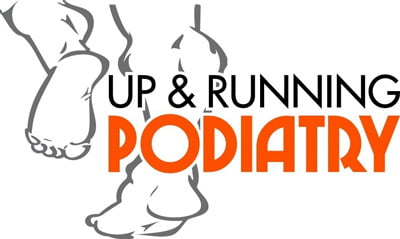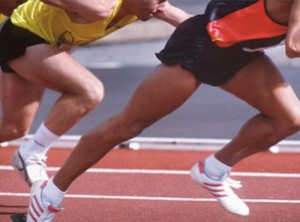Whether we runners like to admit it, the majority of us have individual weaknesses of some degree. These weaknesses may be occupation related (a lot of time spent sitting) or due to a lack of conditioning. These deficiencies may surface in the form of enforced rest due to injury, or disruption of regular training sessions due to fatigue or persistent ‘niggles’.
All runners are different; we have different motivations, different injury history, different biomechanics and different levels of physical strength.
As important as biological factors are, running technique can be the key to keeping injury free. Improved running technique can often reduce the reliance on strength and biomechanical injury factors.
Awareness of running ‘form’ should always be considered at any level of running and below are some basic tips on where to make a start.
– Shoulders and head level
– Stand tall with your chest proud
– Arms relaxed with elbows at 90 degrees
– ‘Tuck’ hips beneath your body (belly button sucked in and up)
*Important for glute activation*
– Pelvis should remain stable (minimal tilt and rotation)
– Grounded leg should be straight in-line at the ankle, knee and hip
– Bend forward at the ankle only
– Foot strike to take place under the hip, reducing any ‘braking’ force from your leg
– Maintain a cadence of close to 180 steps per minute to reduce over-striding
– Forefoot, Midfoot or Heel strike? Do what feels most comfortable; just get it under your hip!
Sometimes correct running form and a smart graduated program of distance and intensity still doesn’t quite get the job done when trying to stay injury free. This is when foot biomechanics and hip /leg strength should be considered.
An efficient biomechanical foot is essentially one that that ‘pronates’ (rolls inward) within a healthy range, and is therefore capable of absorbing repetitive forces apposed from the ground.
A podiatry biomechanical running assessment is designed to identify abnormal foot biomechanics. A podiatrist can identify risk factors for injury through way of thorough history taking, joint range of motion testing , footwear assessment and a running examination via treadmill video gait analysis.
Potential treatment may include;
– A tailored stretching and strengthening program to improve soft tissue compliance and stability
– Footwear advice to ensure your foot is exposed to safe degree of ground reaction force
– Strapping and padding to temporarily improve foot function and settle acute injuries
– Potential intervention with pre-fabricated to fully customised foot orthotics if required.
Up and Running Podiatry offers an extensive 45 minute running assessment designed for runners of all levels.

